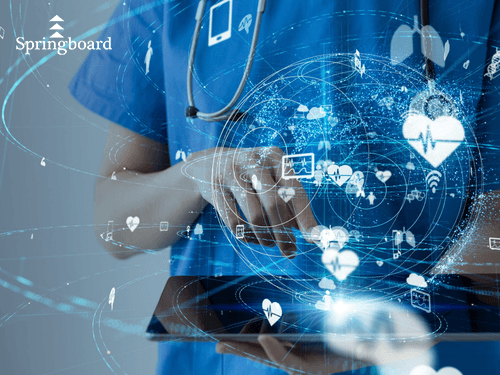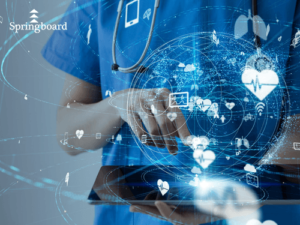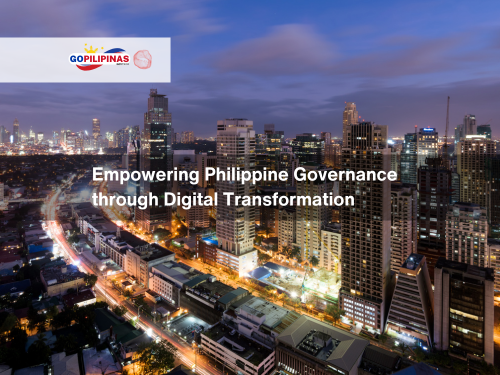June 25, 2024 — 4min read
The Role of Technology in Transforming Philippine Healthcare
In recent years, the Philippines’ healthcare system has undergone significant transformation, much of which can be attributed to technology’s rapid advancement and integration. Digitizing the health system has given rise to telehealth and telemedicine solutions. This article explores the key technological developments that are revolutionizing healthcare in the Philippines and their impact on the health and well-being of its population.

Acceptance of Telemedicine in the Philippines
The utilization of telemedicine has been shown to increase access to healthcare services and bridge gaps in existing healthcare system issues. Telemedicine platforms allow patients to consult with health professionals remotely using smartphones, tablets, or computers. Over the past five years, telemedicine service grew by 44% due to its applications in psychiatry, pathology, radiology, emergency medicine, and internal medicine subspecialties such as cardiology and neurology. In the Philippines, the adaptation of telemedicine faced issues due to governance and implementation challenges. However, the Department of Health (DOH) in the Philippines has proactively addressed these challenges. They initiated the National eHealth Program (NeHP), a collaborative effort involving multiple agencies to integrate digital health services. This initiative aims to enhance access to healthcare for patients needing medical assistance from various physicians. Several telemedicine modalities are being employed, including RX Boxes, which are telehealth devices that measure temperature, oxygen saturation, blood pressure, heart rate, ECG readings, and uterine contractions. Additionally, over-the-phone calls, chat SMS, and other audio and video conferencing platforms are used for diagnosis. These methods enable medical practitioners to conduct consultations and issue electronic case reports and prescriptions (Ong et al., 2022).
COVID-19 Effects on Telehealth
During the COVID-19 pandemic, telemedicine significantly used technologies to remotely gain information regarding health status. Since both patients and doctors exhibit issues with conventional face-to-face in fear of putting health at risk, there is an increasingly urgent need for an alternative to in-person consultations. An example of this is H4D’s Consult Station, a concrete example of how telemedicine is being used to address healthcare challenges. H4D, an international company specializing in clinical telemedicine, joined the global effort to combat the COVID-19 pandemic by providing healthcare facilities, local authorities, and senior residences with a quick, efficient, and reliable solution to facilitate patient care.
The Consult Station enables patients to take their vital signs and conduct teleconsultations with a doctor via video conference. If needed, these consultations are supported by the necessary instruments and sensors for performing clinical examinations, diagnoses, and prescriptions. However, telemedicine is only sometimes suitable for some situations. Proper diagnosis by doctors is essential for all patients, including those who are immunocompromised, and this consideration must not be overlooked (Cordero, 2022).
Mobile Health Apps: Empowering Patients
Healthcare for Filipinos is becoming more accessible with the launch of the country’s first fully integrated health and wellness app. They have achieved popularity nationwide, entrusting individuals to take charge of their health (Philippine Healthcare Expands With Health and Wellness Mobile App – OpenGov Asia, 2021). These apps offer several services, including appointment scheduling, medication reminders, fitness tracking, and access to medical information. Apps like mWell allow users to monitor their health metrics and connect with healthcare professionals (Luna, 2022). The value of Mobile Health apps lies in their ability to promote preventive care and healthy lifestyles. These apps facilitate proactive health management by equipping users with personalized health tips and reminders, potentially reducing the incidence of chronic diseases and improving the population’s overall health.
Transforming Diagnostic and Treatment through AI and Data
Artificial intelligence (AI) and big data analytics are making significant inroads into the Philippine healthcare system. AI-powered tools are used to improve diagnostics, predict disease outbreaks, and personalize treatment plans. For instance, AI algorithms can analyze medical images with high accuracy, aiding in the early detection of conditions such as cancer. Virtual health assistants and chatbots can alleviate workloads and enhance efficiency, while advanced diagnostic and clinical decision-support tools can improve population health management and patient outcomes (Dogan, 2024). The potential of these technologies in transforming healthcare is immense, and their integration into the healthcare system can lead to significant improvements in patient care and health outcomes.
Big data analytics, on the other hand, allows healthcare providers to analyze vast amounts of health data to identify trends, improve patient care, and optimize resource allocation, such as medical records and social demographics. By leveraging data from various sources, including EHRs, mHealth apps, and public health records, healthcare professionals can gain valuable insights into population health and develop targeted interventions (How Far Can Health Researchers Access a Patient’s Data? n.d.).
Future Potentials of Healthcare
Looking ahead, the continued adoption and innovation of technology in healthcare hold great promise for the Philippines. As telemedicine, EHRs, mHealth apps, AI, and big data become more entrenched in the healthcare landscape, the potential for improved health outcomes, greater efficiency, and enhanced patient empowerment grows exponentially. Technology is playing a pivotal role in transforming Philippine healthcare. From making healthcare more accessible and efficient to empowering patients and enhancing diagnostics, technological innovations are paving the way for a healthier future. By addressing the existing challenges and fostering a supportive environment for technological growth, the Philippines can continue to leverage these advancements to improve the health and well-being of its people.
Contact us to learn how we can help you achieve your business goals. You can email us at [email protected] or go to the website Springboard Philippines. Also, don’t forget to follow our socials page for more updates on the latest trends!
References
Cordero, D. A. (2022, July 6). Telehealth during the COVID-19 pandemic in the Philippines. NCBI. Retrieved June 25, 2024, from https://www.ncbi.nlm.nih.gov/pmc/articles/PMC9384447/
Dogan, M. (2024, May 14). AI’s Transformative Power In Healthcare Diagnostics. Forbes. Retrieved June 25, 2024, from https://www.forbes.com/sites/forbestechcouncil/2024/05/14/ais-transformative-power-in-healthcare-diagnostics/
Health Data Analytics and Privacy: How far can health researchers access a patient’s data? | Philippine Council for Health Research and Development. (n.d.). Philippine Council for Health Research and Development. Retrieved June 25, 2024, from https://www.pchrd.dost.gov.ph/news_and_updates/health-data-analytics-and-privacy-how-far-can-health-researchers-access-a-patients-data/
Luno, E. (2022, Oct 27). mWell, the Philippines’ first fully integrated platform, raises the bar for digital health apps. Manila Bulletin. https://mb.com.ph/2022/10/27/mwell-the-philippines-first-fully-integrated-platform-raises-the-bar-for-digital-health-apps/
Ong, A. K. S., Kurata, Y. B., Castro, S. A. D.G., De Leon, J. P. B., Dela Rosa, H. V., & Tomines, A. P. J. (2022, August). Factors influencing the acceptance of telemedicine in the Philippines. Elsevier. Retrieved 24 June, 2024, from https://www.sciencedirect.com/science/article/abs/pii/S0160791X22001816
Philippine Healthcare Expands with Health and Wellness Mobile App – OpenGov Asia. (2021, August 9). OpenGov Asia. Retrieved June 24, 2024, from https://opengovasia.com/2021/08/09/philippine-healthcare-expanded-with-its-first-health-and-wellness-mobile-app/
The Role of Technology in Transforming Philippine Healthcare
In recent years, the Philippines’ healthcare system has undergone significant transformation, much of which can be attributed to technology’s rapid advancement and integration. Digitizing the health system has given rise to telehealth and telemedicine solutions. This article explores the key technological developments that are revolutionizing healthcare in the Philippines and their impact on the health and well-being of its population.
June 25, 2024 — 4min read

Acceptance of Telemedicine in the Philippines
The utilization of telemedicine has been shown to increase access to healthcare services and bridge gaps in existing healthcare system issues. Telemedicine platforms allow patients to consult with health professionals remotely using smartphones, tablets, or computers. Over the past five years, telemedicine service grew by 44% due to its applications in psychiatry, pathology, radiology, emergency medicine, and internal medicine subspecialties such as cardiology and neurology. In the Philippines, the adaptation of telemedicine faced issues due to governance and implementation challenges. However, the Department of Health (DOH) in the Philippines has proactively addressed these challenges. They initiated the National eHealth Program (NeHP), a collaborative effort involving multiple agencies to integrate digital health services. This initiative aims to enhance access to healthcare for patients needing medical assistance from various physicians. Several telemedicine modalities are being employed, including RX Boxes, which are telehealth devices that measure temperature, oxygen saturation, blood pressure, heart rate, ECG readings, and uterine contractions. Additionally, over-the-phone calls, chat SMS, and other audio and video conferencing platforms are used for diagnosis. These methods enable medical practitioners to conduct consultations and issue electronic case reports and prescriptions (Ong et al., 2022).
COVID-19 Effects on Telehealth
During the COVID-19 pandemic, telemedicine significantly used technologies to remotely gain information regarding health status. Since both patients and doctors exhibit issues with conventional face-to-face in fear of putting health at risk, there is an increasingly urgent need for an alternative to in-person consultations. An example of this is H4D’s Consult Station, a concrete example of how telemedicine is being used to address healthcare challenges. H4D, an international company specializing in clinical telemedicine, joined the global effort to combat the COVID-19 pandemic by providing healthcare facilities, local authorities, and senior residences with a quick, efficient, and reliable solution to facilitate patient care.
The Consult Station enables patients to take their vital signs and conduct teleconsultations with a doctor via video conference. If needed, these consultations are supported by the necessary instruments and sensors for performing clinical examinations, diagnoses, and prescriptions. However, telemedicine is only sometimes suitable for some situations. Proper diagnosis by doctors is essential for all patients, including those who are immunocompromised, and this consideration must not be overlooked (Cordero, 2022).
Mobile Health Apps: Empowering Patients
Healthcare for Filipinos is becoming more accessible with the launch of the country’s first fully integrated health and wellness app. They have achieved popularity nationwide, entrusting individuals to take charge of their health (Philippine Healthcare Expands With Health and Wellness Mobile App – OpenGov Asia, 2021). These apps offer several services, including appointment scheduling, medication reminders, fitness tracking, and access to medical information. Apps like mWell allow users to monitor their health metrics and connect with healthcare professionals (Luna, 2022). The value of Mobile Health apps lies in their ability to promote preventive care and healthy lifestyles. These apps facilitate proactive health management by equipping users with personalized health tips and reminders, potentially reducing the incidence of chronic diseases and improving the population’s overall health.
Transforming Diagnostic and Treatment through AI and Data
Artificial intelligence (AI) and big data analytics are making significant inroads into the Philippine healthcare system. AI-powered tools are used to improve diagnostics, predict disease outbreaks, and personalize treatment plans. For instance, AI algorithms can analyze medical images with high accuracy, aiding in the early detection of conditions such as cancer. Virtual health assistants and chatbots can alleviate workloads and enhance efficiency, while advanced diagnostic and clinical decision-support tools can improve population health management and patient outcomes (Dogan, 2024). The potential of these technologies in transforming healthcare is immense, and their integration into the healthcare system can lead to significant improvements in patient care and health outcomes.
Big data analytics, on the other hand, allows healthcare providers to analyze vast amounts of health data to identify trends, improve patient care, and optimize resource allocation, such as medical records and social demographics. By leveraging data from various sources, including EHRs, mHealth apps, and public health records, healthcare professionals can gain valuable insights into population health and develop targeted interventions (How Far Can Health Researchers Access a Patient’s Data? n.d.).
Future Potentials of Healthcare
Looking ahead, the continued adoption and innovation of technology in healthcare hold great promise for the Philippines. As telemedicine, EHRs, mHealth apps, AI, and big data become more entrenched in the healthcare landscape, the potential for improved health outcomes, greater efficiency, and enhanced patient empowerment grows exponentially. Technology is playing a pivotal role in transforming Philippine healthcare. From making healthcare more accessible and efficient to empowering patients and enhancing diagnostics, technological innovations are paving the way for a healthier future. By addressing the existing challenges and fostering a supportive environment for technological growth, the Philippines can continue to leverage these advancements to improve the health and well-being of its people.
Contact us to learn how we can help you achieve your business goals. You can email us at [email protected] or go to the website Springboard Philippines. Also, don’t forget to follow our socials page for more updates on the latest trends!
The Role of Technology in Transforming Philippine Healthcare
In recent years, the Philippines’ healthcare system has undergone significant transformation, much of which can be attributed to technology’s rapid advancement and integration. Digitizing the health system has given rise to telehealth and telemedicine solutions. This article explores the key technological developments that are revolutionizing healthcare in the Philippines and their impact on the health and well-being of its population.

June 25, 2024 — 4min read
Acceptance of Telemedicine in the Philippines
The utilization of telemedicine has been shown to increase access to healthcare services and bridge gaps in existing healthcare system issues. Telemedicine platforms allow patients to consult with health professionals remotely using smartphones, tablets, or computers. Over the past five years, telemedicine service grew by 44% due to its applications in psychiatry, pathology, radiology, emergency medicine, and internal medicine subspecialties such as cardiology and neurology. In the Philippines, the adaptation of telemedicine faced issues due to governance and implementation challenges. However, the Department of Health (DOH) in the Philippines has proactively addressed these challenges. They initiated the National eHealth Program (NeHP), a collaborative effort involving multiple agencies to integrate digital health services. This initiative aims to enhance access to healthcare for patients needing medical assistance from various physicians. Several telemedicine modalities are being employed, including RX Boxes, which are telehealth devices that measure temperature, oxygen saturation, blood pressure, heart rate, ECG readings, and uterine contractions. Additionally, over-the-phone calls, chat SMS, and other audio and video conferencing platforms are used for diagnosis. These methods enable medical practitioners to conduct consultations and issue electronic case reports and prescriptions (Ong et al., 2022).
COVID-19 Effects on Telehealth
During the COVID-19 pandemic, telemedicine significantly used technologies to remotely gain information regarding health status. Since both patients and doctors exhibit issues with conventional face-to-face in fear of putting health at risk, there is an increasingly urgent need for an alternative to in-person consultations. An example of this is H4D’s Consult Station, a concrete example of how telemedicine is being used to address healthcare challenges. H4D, an international company specializing in clinical telemedicine, joined the global effort to combat the COVID-19 pandemic by providing healthcare facilities, local authorities, and senior residences with a quick, efficient, and reliable solution to facilitate patient care.
The Consult Station enables patients to take their vital signs and conduct teleconsultations with a doctor via video conference. If needed, these consultations are supported by the necessary instruments and sensors for performing clinical examinations, diagnoses, and prescriptions. However, telemedicine is only sometimes suitable for some situations. Proper diagnosis by doctors is essential for all patients, including those who are immunocompromised, and this consideration must not be overlooked (Cordero, 2022).
Mobile Health Apps: Empowering Patients
Healthcare for Filipinos is becoming more accessible with the launch of the country’s first fully integrated health and wellness app. They have achieved popularity nationwide, entrusting individuals to take charge of their health (Philippine Healthcare Expands With Health and Wellness Mobile App – OpenGov Asia, 2021). These apps offer several services, including appointment scheduling, medication reminders, fitness tracking, and access to medical information. Apps like mWell allow users to monitor their health metrics and connect with healthcare professionals (Luna, 2022). The value of Mobile Health apps lies in their ability to promote preventive care and healthy lifestyles. These apps facilitate proactive health management by equipping users with personalized health tips and reminders, potentially reducing the incidence of chronic diseases and improving the population’s overall health.
Transforming Diagnostic and Treatment through AI and Data
Artificial intelligence (AI) and big data analytics are making significant inroads into the Philippine healthcare system. AI-powered tools are used to improve diagnostics, predict disease outbreaks, and personalize treatment plans. For instance, AI algorithms can analyze medical images with high accuracy, aiding in the early detection of conditions such as cancer. Virtual health assistants and chatbots can alleviate workloads and enhance efficiency, while advanced diagnostic and clinical decision-support tools can improve population health management and patient outcomes (Dogan, 2024). The potential of these technologies in transforming healthcare is immense, and their integration into the healthcare system can lead to significant improvements in patient care and health outcomes.
Big data analytics, on the other hand, allows healthcare providers to analyze vast amounts of health data to identify trends, improve patient care, and optimize resource allocation, such as medical records and social demographics. By leveraging data from various sources, including EHRs, mHealth apps, and public health records, healthcare professionals can gain valuable insights into population health and develop targeted interventions (How Far Can Health Researchers Access a Patient’s Data? n.d.).
Future Potentials of Healthcare
Looking ahead, the continued adoption and innovation of technology in healthcare hold great promise for the Philippines. As telemedicine, EHRs, mHealth apps, AI, and big data become more entrenched in the healthcare landscape, the potential for improved health outcomes, greater efficiency, and enhanced patient empowerment grows exponentially. Technology is playing a pivotal role in transforming Philippine healthcare. From making healthcare more accessible and efficient to empowering patients and enhancing diagnostics, technological innovations are paving the way for a healthier future. By addressing the existing challenges and fostering a supportive environment for technological growth, the Philippines can continue to leverage these advancements to improve the health and well-being of its people.
Contact us to learn how we can help you achieve your business goals. You can email us at [email protected] or go to the website Springboard Philippines. Also, don’t forget to follow our socials page for more updates on the latest trends!
References
Cordero, D. A. (2022, July 6). Telehealth during the COVID-19 pandemic in the Philippines. NCBI. Retrieved June 25, 2024, from https://www.ncbi.nlm.nih.gov/pmc/articles/PMC9384447/
Dogan, M. (2024, May 14). AI’s Transformative Power In Healthcare Diagnostics. Forbes. Retrieved June 25, 2024, from https://www.forbes.com/sites/forbestechcouncil/2024/05/14/ais-transformative-power-in-healthcare-diagnostics/
Health Data Analytics and Privacy: How far can health researchers access a patient’s data? | Philippine Council for Health Research and Development. (n.d.). Philippine Council for Health Research and Development. Retrieved June 25, 2024, from https://www.pchrd.dost.gov.ph/news_and_updates/health-data-analytics-and-privacy-how-far-can-health-researchers-access-a-patients-data/
Luno, E. (2022, Oct 27). mWell, the Philippines’ first fully integrated platform, raises the bar for digital health apps. Manila Bulletin. https://mb.com.ph/2022/10/27/mwell-the-philippines-first-fully-integrated-platform-raises-the-bar-for-digital-health-apps/
Ong, A. K. S., Kurata, Y. B., Castro, S. A. D.G., De Leon, J. P. B., Dela Rosa, H. V., & Tomines, A. P. J. (2022, August). Factors influencing the acceptance of telemedicine in the Philippines. Elsevier. Retrieved 24 June, 2024, from https://www.sciencedirect.com/science/article/abs/pii/S0160791X22001816
Philippine Healthcare Expands with Health and Wellness Mobile App – OpenGov Asia. (2021, August 9). OpenGov Asia. Retrieved June 24, 2024, from https://opengovasia.com/2021/08/09/philippine-healthcare-expanded-with-its-first-health-and-wellness-mobile-app/





